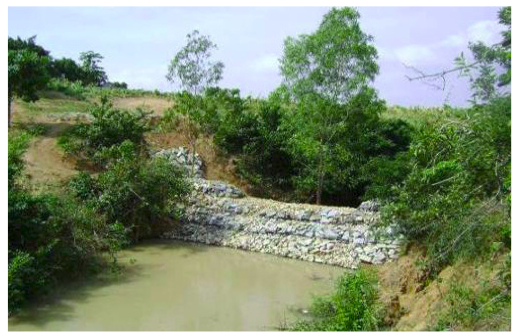Water Portal / Rainwater Harvesting / Groundwater recharge / Leaky dams
A floodwater harvesting technique, these are permeable structures built across seasonal riverbeds which retain flash flood water that has a high silt load. The idea is to retain the high-energy floods and stimulate settlement of suspended sediment behind the dam. Water with a lower sediment load is then available to leak through the dam and infiltrate the downstream riverbed which is not blocked by sediment deposits. They have been proven to be able to recharge local aquifers.
Suitable conditions
Good practice is somewhat similar to that for sand dams.
- Ensure they are not built in an area where water will bypass the structure. Riverbanks should be equal in height and tall enough (height of dam + height of flood +10%), and dam should not be constructed near the bend in a river.
- Site where river is narrower, so that construction is cheaper.
Construction, operations and maintenance
Similar construction as sand dams:
- Construct wing walls to avoid erosion around edges.
- Spillway is designed for river flow, and therefore varies according to the site.
- Avoid downstream erosion of dam base by making protective slab made from more rock-filled gabions.
- Timing is important: dams should be built during the dry season, but don’t build dams too close to the rains in order to avoid dam being washed away.
The dam can be made from rocks of various sizes (boulders, cobbles, stones, large gravel) that are found in and around the riverbed. In Pakistan, rocks of 200mm diameter were used. In Balochistan, the rocks are held within wire mesh nets that are built in 5 steps to total height of 4.9 metres. The exact height of the dam will vary and depend on the riverbed topography. A reinforced concrete cut-off 1.5 metres deep with 2 metre toes on both sides of the dam ensure stability. To prevent the water behind the dam percolating too quickly, it helps to put adjustable sheets filled with small size gravel on the upstream side of the dam body.

